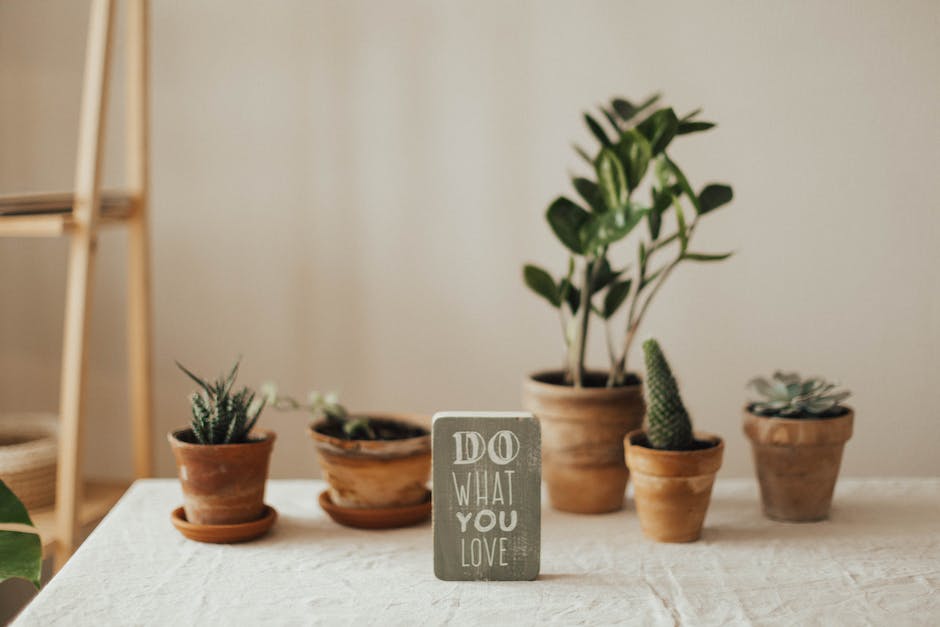Welcome to the fantastic world of indoor plants – a universe of tranquil beauty and natural wonder that provides not just a touch of interior design, but also a sense of tranquility and relaxation while assisting in improving the air quality at home. This guide will help you comprehend the wide range of indoor plants preferable for beginners, such as snake plants, spider plants, and heartleaf philodendrons. Not only will we delve into understanding their distinct nature and benefits, but we’ll also examine the essential aspects of plant care, including precise watering routines, ideal lighting conditions, and preferred temperature and humidity levels. This guide will also provide you with the knowledge to tackle common problems that can potentially harm your indoor garden, from pesky pests to watering woes and looming diseases. Furthermore, to ensure your plants’ steady growth, it will equip you with potting and repotting techniques that most fit your chosen plants.
Understanding Different Types of Indoor Plants
Snake Plants: Low Maintenance and Durable
Snake plants, scientifically known as Sansevieria, are a top choice for beginners because of their exceptional resilience. These plants are known for their long, upright leaves that come in a range of colors, from dark green to silvery hues. Snake plants thrive in a range of lighting conditions, making them versatile for different spots in a home—whether under direct sunlight or in relatively shaded corners. They require infrequent watering, with more watering necessary during growth periods in the spring and summer, and less in the winter. Benefits of snake plants include their air-purifying qualities, as they can absorb toxins and release oxygen at night.
Spider Plants: Hardy and Appealing
Spider plants, or Chlorophytum comosum, are known for their arching, grass-like leaves and small white flowers. These plants are exceptionally sturdy, forgiving to beginners’ mistakes, and can adapt to diverse indoor conditions. Light-wise, spider plants prefer bright, indirect sunlight, though they can cope just fine in semi-shade. They like to be watered well but can tolerate periods of drought. Overwatering is the main challenge. Spider plants are pet-friendly and possess air-purifying properties, thus promoting a healthier home environment.
Heartleaf Philodendrons: Beautiful and Forgiving
Heartleaf philodendrons, or Philodendron hederaceum, are characterized by their lush, trailing vines of heart-shaped leaves. They are particularly well known for their fast growth and adaptability to a wide variety of indoor conditions. They do well in brightly lit or low-light areas, and they need to be watered when their top inch of soil feels dry. One thing to note is that, while these plants are attractive, they are not pet-friendly and can be poisonous if ingested in large quantities. On the upside, heartleaf philodendrons can also purify indoor air.
Benefits of Indoor Plants for Beginners
Starting with easy-care indoor plants like snake plants, spider plants, and heartleaf philodendrons provides beginners with a forgiving and rewarding introduction to plant care. Beyond the aesthetic appeal these plants bring to your home, each has particular environmental benefits, such as purifying air by reducing CO2 levels and increasing humidity, which can help reduce respiratory disorders. Together, these qualities make indoor gardening an enriching hobby for beginners.

Plant Care Basics
Understanding Plant Care Basics: Watering, Lighting, And Temperature Preferences
One of the cornerstones of basic plant care involves understanding when, how much, and how often to water your indoor plants. Most indoor plants require their soil to be kept evenly moist. However, over-watering can often lead to root rot and under-watering can cause the plant to dry out. As a beginner, it’s usually best to water plants when the top inch of soil has dried out.
The watering frequency largely depends on the type of the plant, the temperature, and the season. Cacti and succulents, for example, need minimal watering – about once every two weeks, while tropical plants like Philodendrons prefer more frequent watering.
Considering Light Requirements: Direct vs. Indirect Sunlight
Indoor plants have various light requirements ranging from low, indirect light to bright, direct sunlight. Plants with high light requirements such as succulents and cacti need bright, direct sunlight for several hours each day, while foliage plants like pothos and ZZ plants can survive in lower light conditions.
North-facing windows tend to receive less direct sunlight, whereas south-facing windows have more direct sunlight. East and west-facing windows provide moderate sunlight, but be careful with hot afternoon sunlight from the west, as it can sometimes scorch delicate plants.
Understanding Temperature and Humidity Preferences
The temperature requirements for indoor plants vary significantly depending on their species. However, most indoor plants prefer temperatures between 65 and 75 degrees Fahrenheit during the day, with a drop of up to 10 degrees at night. Temperatures below 55 degrees can damage most indoor plants.
Humidity is another key factor in indoor plant care. Many common indoor plants originate from tropical environments and will thrive when moisture levels in the air are relatively high. You might need a humidifier for plants like ferns that prefer humid conditions. Other plants, like succulents, prefer lower humidity.
Remember, as a beginner, you need to closely observe your plants. Changes in their leaves can signal whether they’re receiving too much light or water, or if the temperature and humidity aren’t right. Over time, you’ll get a clear understanding of their preferences and needs.

Troubleshooting Problems
Recognizing Problems in Indoor Plants
The first step in troubleshooting plant problems is knowing what to look for. Common issues can be categorized in different ways: pest infestations, watering issues, and diseases.
Identifying Pest Infestations
Many indoor plants can be host to a variety of pests. Spider mites are tiny and often go unnoticed until plants’ leaves take on a speckled appearance. Scale insects attach themselves to stems and leaves and leave behind a sticky residue. Aphids suck the sap from plants and can cause them to wilt.
For most pests, an initial solution can be as simple as washing the plant with a gentle stream of water. For more stubborn infestations, consider using an insecticidal soap or a product specifically designed for plant pests. Be sure to isolate affected plants to prevent pests from spreading to other plants.
Detecting Overwatering and Underwatering Issues
Watering issues are also common in indoor plants. Overwatered plants often have yellow leaves that may feel mushy to the touch. The soil might also have a persistent damp feel, and you may notice a foul odor due to root rot.
Underwatered plants, on the other hand, often have brown, crispy leaves. The soil will feel dry to the touch, and the plant may droop despite receiving adequate sunshine.
Balancing your watering routine can solve this problem. It’s critical to understand the specific needs of each plant species, as some want their soil moist at all times, while others prefer their soil to dry out completely between waterings.
Identifying Diseases in Indoor Plants
Plant diseases can vary widely in their symptoms, but be on the lookout for unusual leaf discoloration, spots, mold, or deformities. Fungal infections are often present in overly moisted environments and can be managed by adjusting watering habits and providing proper ventilation.
Bacterial and viral diseases are harder to manage. Infected plants may need to be discarded to prevent the disease from spreading.
In conclusion, determining the health of indoor plants involves careful observation and troubleshooting. Regularly check the condition of leaves, the health of roots, and the condition of the soil. Armed with these basics, you can troubleshoot common problems and help your indoor plants thrive.

Potting and Repotting Techniques
Understanding Potting and Repotting Techniques
Potting and repotting plants is a crucial component of plant care, helping to ensure robust growth and overall plant health. The first step includes choosing the right pot for your particular plant type. Generally, the pot size should be approximately one to two inches larger than your plant’s root ball. A pot that’s too large can result in overwatering, while a small pot may stunt your plant’s growth.
Choosing the Right Pot
When starting, opt for pots with drainage holes. These prevent water from sitting at the bottom and causing damage to roots. Choosing the right materials is equally important. Plastic or ceramic pots are common and suitable for most indoor plants. Plastic pots are lightweight, inexpensive, and retain moisture well, making them a good choice for plants that like evenly moist soil. Ceramic pots, on the other hand, are typically more attractive but heavier and more porous, so they dry out quicker than plastic pots.
Soil Preference for Different Plants
Understanding soil preference is another vital aspect of potting and repotting plants. Different plants thrive in different soil types. For instance, succulents and cacti prefer a fast-draining soil mixture that prevents root rot. In contrast, tropical plants often demand a rich, well-draining potting mix. Do research and understand your plant’s native environment to choose the right soil.
Transplanting Steps
Begin the repotting process by watering the plant in its existing pot a few hours before transplanting. This will help to alleviate the shock of repotting. When you’re ready to transplant, hold the plant at the base near the soil and pull gently. Don’t yank the plant; instead, cradle the root ball to prevent damage.
Trim off any dead or soft roots, then put a small quantity of fresh potting soil at the bottom of the new pot. Position your plant so it sits at the same depth it was in its previous pot. Fill in the sides with more fresh soil and pat gently to secure. Water the plant thoroughly after repotting and move it to an area with indirect sunlight until it begins to settle into its new home.
Knowing When to Repot
Knowing when to repot your plant is crucial. Most indoor plants require repotting every 12-18 months, but there may be signs your plant needs it sooner. If roots are growing through the bottom drainage hole, or if the plant is drying out quickly after watering, it’s likely time to repot. Regular repotting keeps your indoor plants healthy and vibrant, setting them up for successful growth.

As you draw this journey of exploration about indoor plants to a close, remember, consistency is key to thriving green companions. Whether you’re caring for snake plants or heartleaf philodendrons, understanding their basic requirements and nature should always be your first step. Routinely check for the common problems – pests, diseases or improper watering habits, and act promptly to mitigate them. Treat them with love and patience, and they will reward you with more than just aesthetic appeal. Finally, remember that potting and repotting is more than just a maintenance routine; it is a chance to rejuvenate your plants and give them a fresh start. Embrace these practices, and you would not just add to your home decor, but also embark on an incredibly fulfilling journey of nurturing life within your living spaces.




